Films Depicting NASA and the Space Program refers to films that take place in and around the Space Race, the Space Mission or concern themselves with realistically grounded attempts to explore the Solar System. These are stories in which we see:-
- the prediction of the Moon Landing
- the employment of the NASA or cosmonaut space program as fictional devices
- where the space program is extrapolated onwards to depict credible attempts to explore the Solar System based on known or probable advances in science and technology.
This comes in contrast to other works such as Star Trek (1966-9) and Star Wars (1977) and everything covered under the theme Space Opera that dismiss the vast difficulties in crossing interstellar space and have no problems conceiving warp drives and hyperspace to explore and colonise the entire galaxy. In the majority of these, there is minimal concern for realistic science.
For works that take place on the Moon see The Moon. For other planets see Mars, Venus and Journeys Inside the Solar System. For discussions of the means and process of space travel see Films About Space Exploration.
Early Depictions
During the silent era, attempts to launch rockets and explore the Solar System were depicted with little effort at believability. These include the charmingly silly whimsies of George Melies’ A Trip to the Moon (1902) where a rocket is launched by dancing girls and impacts with the Man in the Moon’s eye and An Impossible Voyage (1904) where a train takes off and lands on the Sun, which has a face. There were also copies of Melies like The ? Motorist (1906) where a motorcar takes off into orbit and circles the rings of Saturn; Segundo de Chomon’s Excursion to the Moon (1908) and The Voyage to Jupiter (1909); and the Edison Company’s A Trip to Mars (1909), all blatant copies of A Trip to the Moon, along with other efforts like The Ship That Was Sent Off to Mars (1921) and the slightly more serious The Sky Splitter/The Stellar Express (1922). Equally unrealistic was the Danish Heaven Ship (1918), which depicted a flight to Mars via a plane.
We started to see more credibility in Fritz Lang’s Woman in the Moon (1929) depicting the construction and launching of a rocket to the Moon. This included the first portrayal of a countdown, although The Moon itself was shown to have air once reached. Other rockets launches of the era appear in Flash Gordon (1936) and at the end of Things to Come (1936). However, it seems a stretch to place these in a theme discussing scientifically credible depictions of the Space Mission. From the Soviet side, we had Aelita (1924) and Cosmic Voyage/The Space Ship (1936), the most believable of these early spaceflight films, concerning the launch of rocket expeditions to respectively Mars and The Moon.
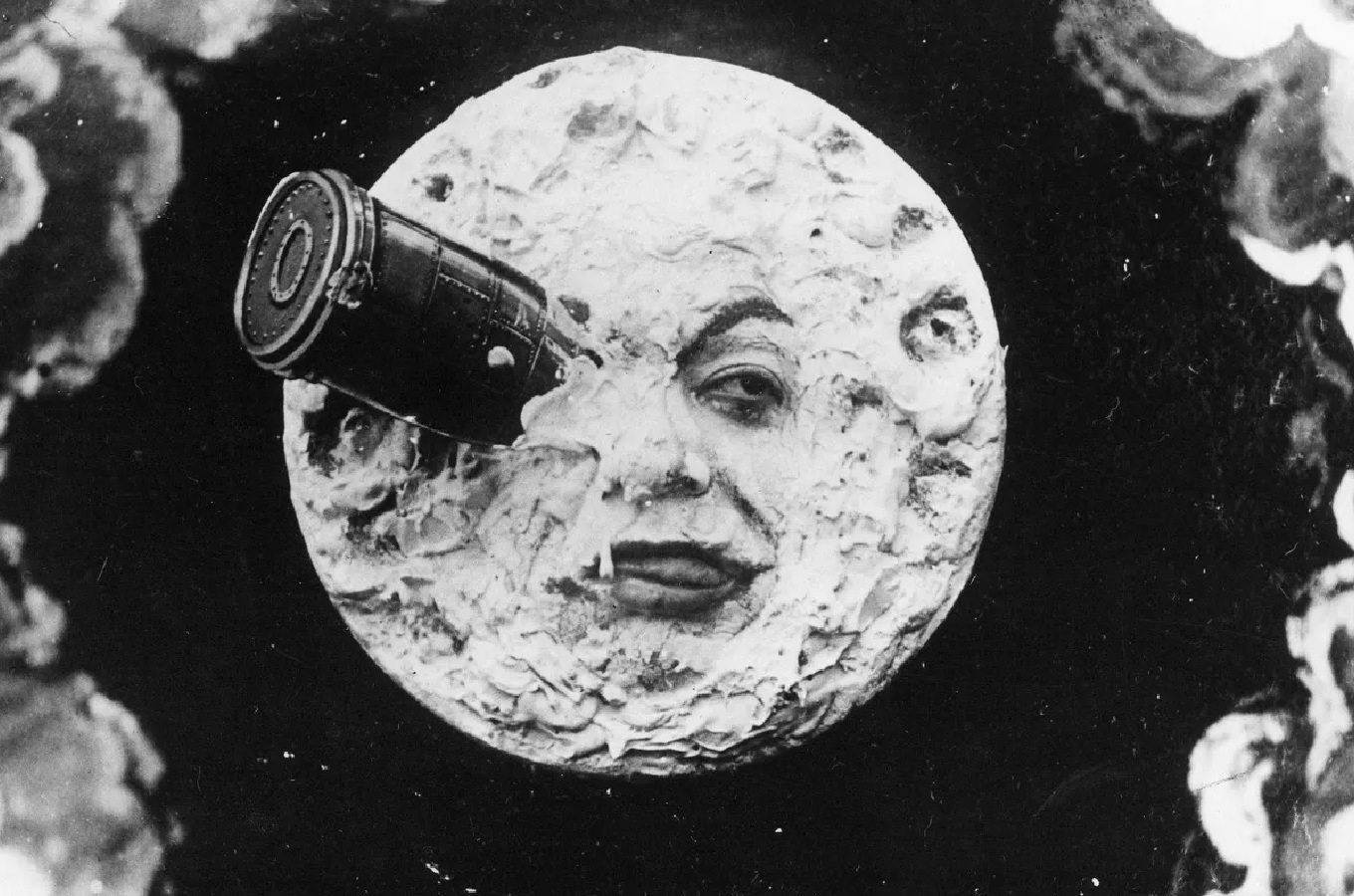
The first and most substantial work to take up this challenge was George Pal’s Destination Moon (1950) with a script from SF writer Robert Heinlein, which did a scientifically credible job of depicting the building of a rocket and landing on The Moon. It was still a ways away from the real thing nineteen years later but was the most realistic attempt on screen up to that point and did so with an enormous optimism that said that all of this was something that was within our reach. Pal followed this with Conquest of Space (1955), which attempted to similarly depict the landing on Mars but that became sidetracked by typical 1950s fears.
Various other films of the 1950s SF boom are set around the launch of near space expeditions – Rocketship X-M (1950), Flight to Mars (1951), Riders to the Stars (1954), Twelve to the Moon (1960) – but few of them display an interest in believability. Indeed, in many of these – War of the Satellites (1958), The Angry Red Planet (1959) – space proves overwhelmingly hostile – or serves to turn astronauts into something monstrous – as in The Quatermass Xperiment/The Creeping Unknown (1955), Night of the Blood Beast (1958) and First Man Into Space (1959). In Tobor the Great (1954), it is decided that the stresses of spaceflight would be too much for a human being and the job is better handled by a robot. The overwhelming sense in these is that burst of optimism shown by Destination Moon was drowned under fears of what we would encounter when we finally did reach space.
The Era of the Space Race
The Space Race began with the launch of Sputnik in 1957 (although the lead-up to this can be dated to several years earlier). Surprisingly, the Space Mission only sporadically featured in 1950s SF after Sputnik. In The Space Children (1958), War of the Satellites and The Cape Canaveral Monsters (1960), aliens arrive seeking to sabotage rocket launches. Elsewhere, Gog (1954) is set at a space research laboratory where an enemy computer virus causes the super-computer and robots to go amok. The title character in Frankenstein Meets the Spacemonster (1965) is actually an android built for space missions that goes amok after crashing.
The 1960s saw a number of comedies based around the Space Mission with Abbott and Costello in Abbott and Costello Go to Mars (1953), The Three Stooges’ Have Rocket — Will Travel (1959), the Disney film Moon Pilot (1962), Bob Hope and Bing Crosby in The Road to Hong Kong (1962), Soupy Sales’ Birds Do It (1966), Doris Day in The Glass Bottom Boat (1966), Jerry Lewis’s Way … Way Out (1966), Don Knotts’ The Reluctant Astronaut (1967) and the British The Bulldog Breed (1960). Even The Perils of Pauline (1967) has the heroine venture into space as a cosmonaut. Among these, the British Man in the Moon (1960) was a more grounded comedy about preparations for a Moon landing.
Mouse on the Moon (1963) gently parodies The Space Race where the world’s smallest country ends up beating all the big powers to land on The Moon using a rocket fuelled by champagne. The sitcom I Dream of Jeannie (1965-70) has Larry Hagman as a NASA astronaut who encounters Barbara Eden’s genie after going off course upon re-entry.
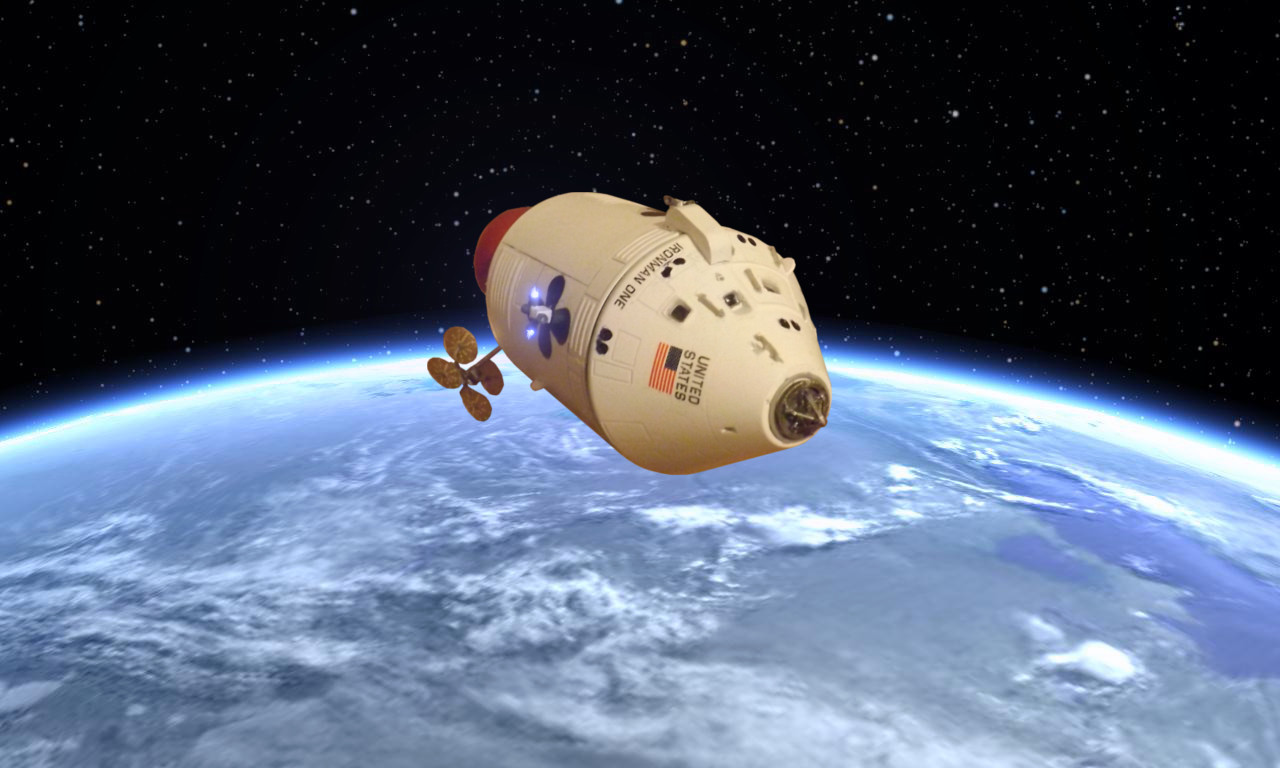
The Space Mission also featured in occasional entries in the era’s fad for Spy Films with the likes of In Like Flint (1967) and most notedly the James Bond film You Only Live Twice (1967), which had SPECTRE abducting Russian and American rocket launches from orbit.
The most realistic works during this era came on television. Disney made three specials Man in Space (1955), Man and the Moon (1955) and Mars and Beyond (1957), speculative documentaries that depict rocket launches and the exploration of the Solar System. There was also the tv series Men Into Space (1959-60) set around realistically grounded attempts to launch rockets and explore near space. The Clear Horizon (1960-2) was a soap opera set around the lives of astronauts.
One intriguing effort was The Twilight Zone episode The Parallel (1963) where a returning astronaut finds himself in an alternate world that is identical but for some essentials details – no President Kennedy and several historical figures are different.
The Moon Landing and After
As the race towards the Moon heated up in the 1960s, there were several films set in and around it. Countdown (1967), an early Robert Altman film, depicted the personal pressures surrounding the launch of a Moon mission. Marooned (1969) was a scientifically grounded work about the attempts to rescue three astronauts who are trapped in orbit during a space mission. Both films feature the Russians coming to the aid of American astronauts when they run into peril.
The most celebrated and ambitious work of this period was Stanley Kubrick’s 2001: A Space Odyssey (1968) from an Arthur C. Clarke script depicting the journey to an orbiting space station, a moonbase and then a mission to Jupiter to investigate an alien artefact. For many years, this was considered the most realistic space film there was.
The low-budget Mission Mars (1968) features astronauts arriving on Mars to find a frozen cosmonaut body. The German-made Operation Ganymede (1977) features the men aboard a mission to Jupiter returning to find Earth deserted. The short-lived British tv series Moonbase 3 (1973) dealt with the day-to-day life on a moonbase. There was also the tv movie Stowaway to the Moon (1975) about a kid who stows away aboard an Apollo mission.
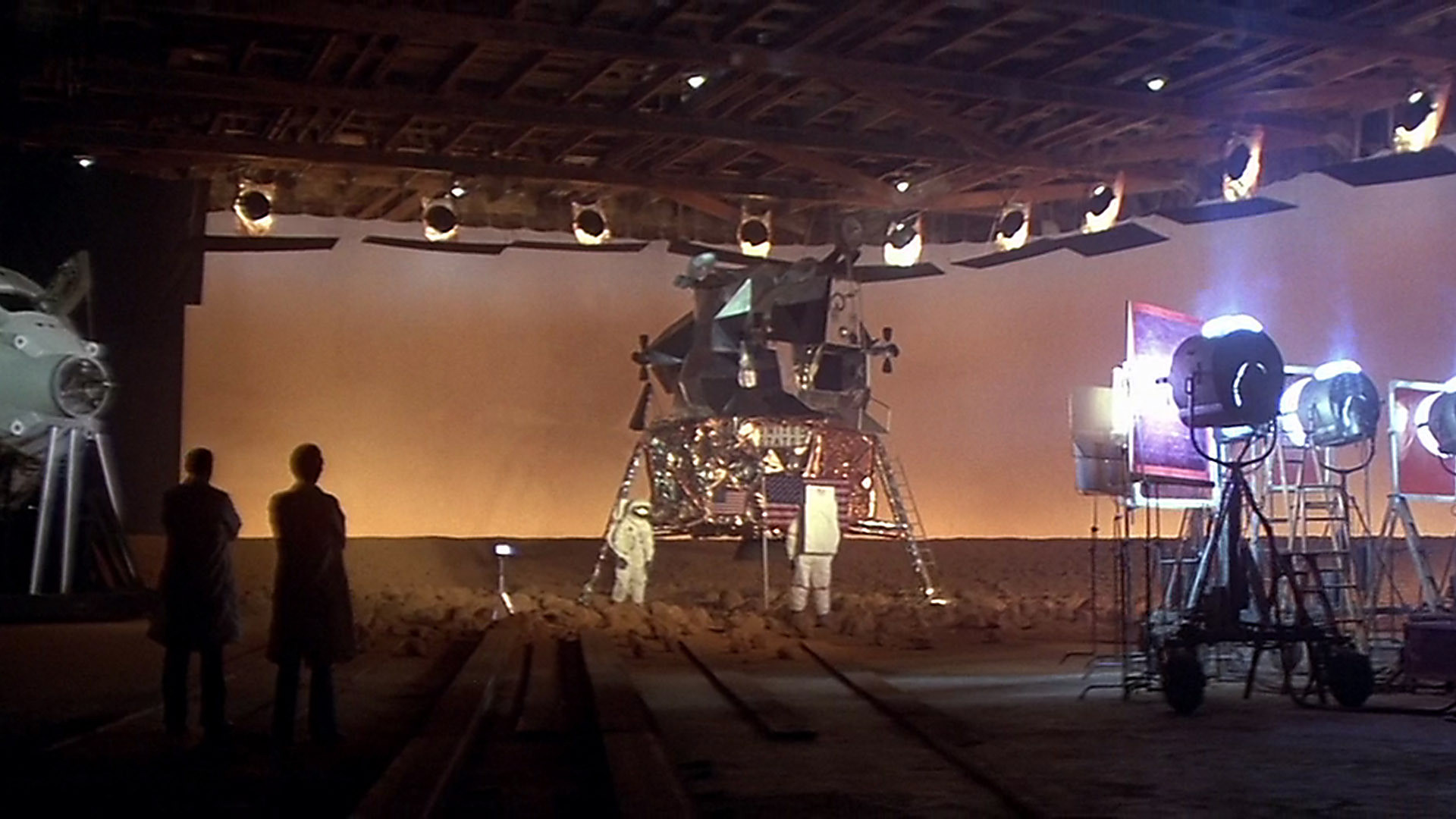
NASA and the Space Mission feature peripherally in other treatments. In The Andromeda Strain (1971), a NASA satellite ends up carrying a deadly viral infection back to Earth. Genesis II (1973) featured a NASA project to cryogenically freeze a man who is awoken several hundred years in the future. The Stranger (1973) features NASA astronauts landing on a Counter-Earth.
The tv series The Six Million Dollar Man (1973-8) features Lee Majors as Steve Austin, a former NASA astronaut rebuilt with cyborg parts following an accident. In the episode The Return of Athena One (1974), he is required to conduct a rescue of a capsule trapped in orbit piloted by the first woman in space (Farrah Fawcett-Majors). The episode Burning Bright (1974) features William Shatner as an astronaut who gains expanded mental powers, including being able to control minds and talks to dolphins, from a mysterious electrical field encountered during a space walk. The X Files episode Space (1993) had an astronaut haunted by the so-called face on Mars
Perhaps the bleakest of the outlooks came from Capricorn One (1978), which fueled an entire industry of conspiracy theories about the faking of the Moon Landing. In the film, NASA finds the first manned Mars landing may have to be cancelled because of a faulty circuit and, facing cutbacks, instead decides to fake a mission in a television studio – only to then have the capsule blow up upon re-entry and the astronauts realise they are meant to be dead.
The Space Shuttle and the Modern Era
The space shuttle was introduced to the world in 1977 and launched in 1981. It quickly began to feature in a number of films. The James Bond film Moonraker (1979) concerns the hijacking of a space shuttle and a super-villain who has built his own fleet of them to relocate to a space station after wiping out the population of Earth.
A shuttle pilot travels back in time to Camelot in Disney’s Unidentified Flying Oddball (1979). In Hangar 18 (1980), a shuttle crew find themselves in the midst of a conspiracy to silence them after they collide with a UFO. In Spacecamp (1986), a group of teenagers attending NASA’s Spacecamp program are accidentally launched into space aboard the shuttle. Deep Rescue (2005) depicts the attempts to rescue the crew after a shuttle crashes and sinks at sea.
In Lifeforce (1985), a space shuttle crew return from an expedition to Halley’s Comet bringing alien vampires with them. Dark Breed (1995), The Astronaut’s Wife (1999), Final Days of Planet Earth (2006) and The Invasion (2007) feature shuttle crews returned taken over by aliens. Moontrap (1989) features shuttle pilots fighting killer alien robots on The Moon. Meteor Moon (2020) and Moonfall (2022) featured a space shuttle missions to prevent the Moon on a collision course with the Earth. The most bizarre of these was The Dark Side of the Moon (1990) with a missing space shuttle reappearing in the 21st Century containing a parasite that is The Devil.
In Buck Rogers in the 25th Century (1979), Gil Gerard’s Buck is now a shuttle pilot who is reawoken in the 25th Century after being frozen in the head of a comet, while Flash Gordon (1980) updates Dr Zarkoff to being a former NASA scientist who builds his own backyard rocketship.
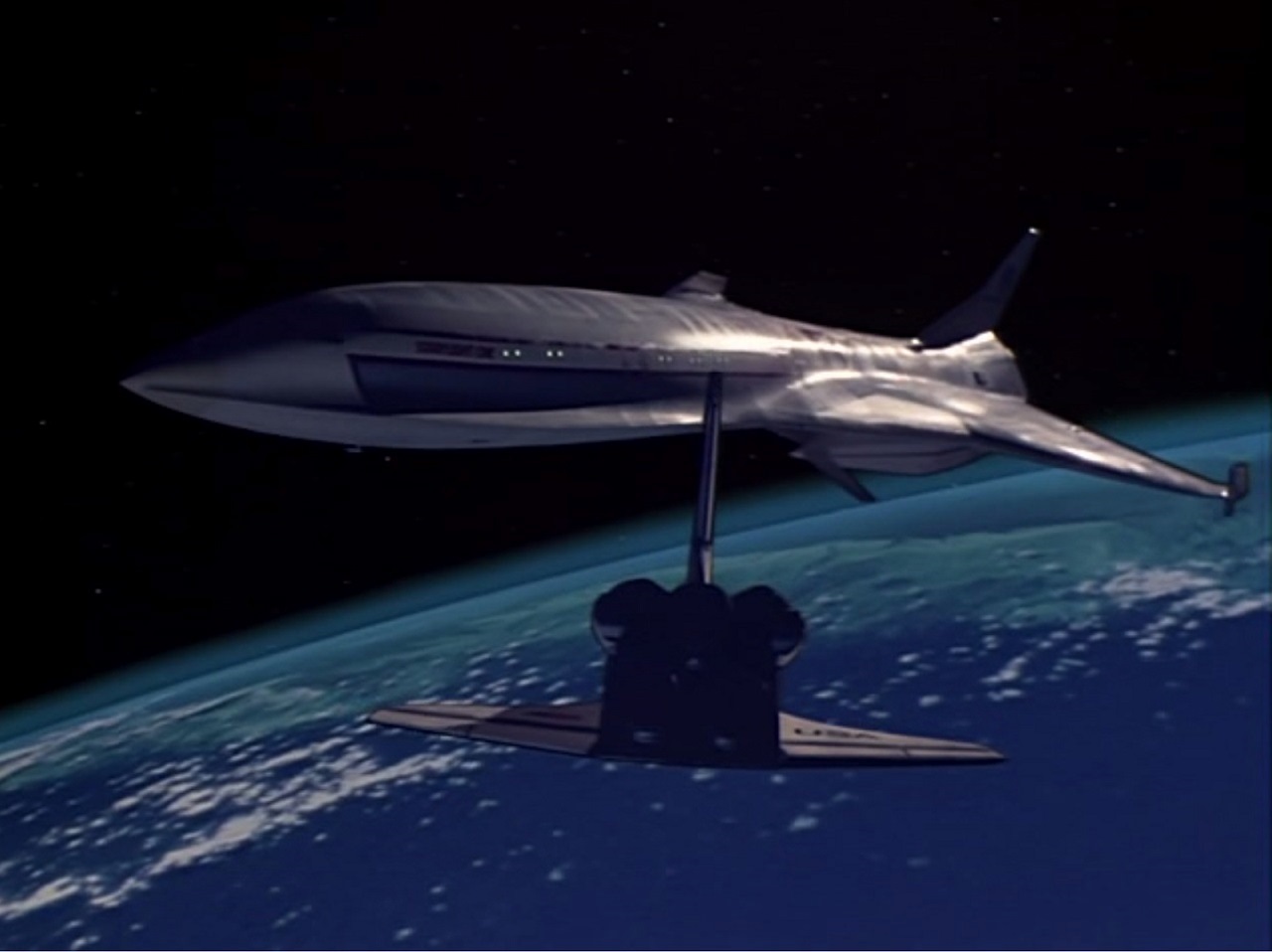
Michael Bay’s loud and noisy Armageddon (1998) depicts a group of roughnecks sent into space aboard a shuttle to detonate nuclear weaponry and deflect an asteroid heading towards Earth, while similar efforts to deflect an asteroid take place in Deep Impact (1998). This is turned on its head in Don’t Look Up (2021), where a shuttle mission is launched to deflect an oncoming comet only to be countermanded by a tech billionaire who seeks to divert the comet for its supply of rare earth minerals.
The disaster movie Starflight One (1983) depicts NASA’s attempts to rescue an intra-orbital plane after it becomes trapped in orbit. Airplane II: The Sequel (1982) was a comedy about a shuttle stranded in orbit. Stranded (2001) is about a NASA rescue mission from a collapsing Russian space station, while Fallout (1998) features Russians hijacking the space station to hold the US to nuclear blackmail.. Return from Orbit (1984) was a Russian-made film about a space rescue. Fallout (1998) concerned a Russian attempt to hijack the International Space Station. If You Were the Last (2023) was a comedy about two astronauts adrift in a shuttle debating over whether to have a relationship.
The Space Shuttle makes appearances in other works such as Quatermass (1979), Ignition (2001), The Core (2003), Riverworld (2003) and Trump vs The Illuminati (2020).
In the entirely ridiculous stakes was Space Chimps (2008), an animated film about talking NASA test chimpanzees and Fly Me to the Moon (2008), an animated film about flies that smuggle aboard the Moon Landing. Spiders (2000) and Sharknado 3: Oh Hell No! (2015) feature respectively mutant spiders and a killer shark aboard a space shuttle. There was also Thunderpants (2002) in which NASA employ a kid with super-powerful farts to launch rockets.
There was also the oddity of Werner Herzog’s The Wild Blue Yonder (2005), which repurposes documentary footage of a shuttle mission as a fictional story about a journey to the stars.
Further Afield
Star Trek – The Motion Picture (1979) depicted the return of NASA’s Voyager probe having been rebuilt into a vast alien intelligence. In Starman (1984), the Voyager probe inspires aliens to visit Earth, while it is also found by aliens in Absolutely Anything (2015). Superman II (1980) depicts an encounter between NASA astronauts and Kryptonian super-villains on The Moon. Invaders from Mars (1986) has Martians invading Earth to stop a NASA Mars launch.
Defcon-4 (1985) features a space station crew being the survivors after an outbreak of nuclear war on Earth below them, while Love (2011) concerns a sole astronaut abandoned aboard the International Space Station. Astronaut: The Last Push (2012) concerns a sole astronaut survivor trying to make a two-year return journey on his own following an accident in space.
Roland Emmerich’s first film The Noah’s Ark Principle (1984) concerned intrigue aboard a weather control space station, while Geostorm (2017) concerns the attempts to use a space station-based weather control system to avert environmental catastrophe on Earth. By contrast, Astronauts (1981-3) was a British sitcom about three astronauts on a space station.
The Incredible Melting Man (1977) concerns a NASA astronaut returned from an expedition to Saturn with a condition that causes his flesh to deliquesce. Ape vs. Monster (2021) concerns a NASA chimpanzee returned after 35 years that grows to giant size. 2036: Origin Unknown (2018) concerns an unmanned expedition to Mars encountering a mysterious cube.
Further afield, the tv series Star Cops (1987) concerned the attempts to create a police force to deal with crime during the exploration and colonisation of near space, while Murder By Moonlight (1989) was a murder mystery that took place between US and Soviet factions on the Moon. The tv movie Murder in Space (1985) was the novelty of a whodunnit set aboard a mission returning from Mars where audiences had to guess who the killer was before the later airing of a special revealed their identity.
There was also the 2001: A Space Odyssey sequel 2010 (1984), which falls in the shadow of Stanley Kubrick but is a far better film than is generally credited, featuring a combined US-Soviet return mission to Jupiter.
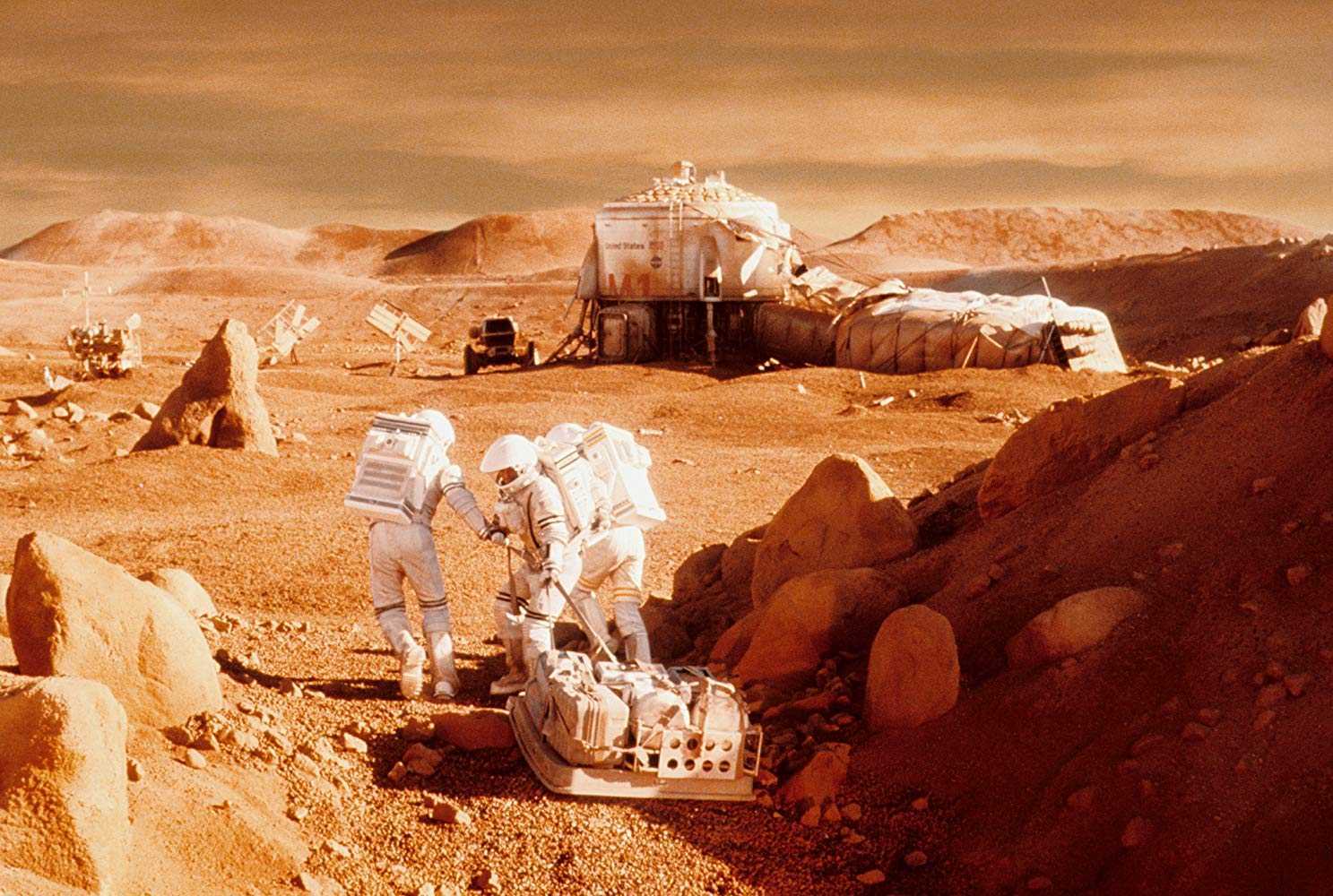
NASA led the colonisation of Mars in The Martian Chronicles (1980). RocketMan (1997) was an inane comedy about an idiot being launched as part of a Mars mission. The 2000s brought a number of films that looked forward to the Mars landing and colonisation with works like Escape from Mars (1999), Mission to Mars (2000), Red Planet (2000), Race to Mars (2000), the tv mini-series Race to Mars (2007) and The Last Days on Mars (2013). These were notable for containing a much more grounded view of Mars than we had previously seen on screen, all depicted adherent with current scientific realities.
SETI (Search for Extraterrestrial Intelligence) or some fictional equivalent is a NASA offshoot that is occasionally depicted in films such as End of the World (1977). The most substantial of these was Contact (1997) depicting the reception of an alien radio signal from space containing directions to build a device to travel through a wormhole.
The era has also seen a number of non-fiction works dealing with the Space Program with the likes of The Right Stuff (1983) about the astronauts of the Mercury program, later remade as the tv series The Right Stuff (2020); Apollo 13 (1995) concerning the lunar mission near-disaster; the tv series From the Earth to the Moon (1998) charting the history of the Apollo space program; Hidden Figures (2016) about the African-American women who computed the mathematics for the launches; the Russian-made Salyut 7 (2017) about a real-life space rescue mission; First Man (2018), which depicts the Moon Landing; Lucy in the Sky (2019) based on the story of astronaut Lisa Nowak and A Million Miles Away (2023) based on real-life Mexican-American shuttle crewmember José M. Hernández.
There was also fictional works like the tv mini-series Space (1985), based on the Space program, and tv series The Cape (1996-7) depicting the day-to-day lives of astronauts, as well as the film Beyond the Stars (1989) where a boy befriends a former astronaut. The Japanese anime Space Brothers (2012-4) and the live-action film version Space Brothers (2012) concern two brother who make a vow to go into space.
Amidst this, there have been a small number of films concerning individuals who have a singular determination to launch their own rockets or get into space. The first of these was Salvage (1979) with Andy Griffith as a junk collector who builds his own rocket with the goal of salvaging all the NASA modules abandoned on The Moon. Clint Eastwood made Space Cowboys (2000) about a team of aging NASA astronauts determined to go back into space for one last hurrah. There was also The Mercury Project/Rocket’s Red Glare (2000) in which a teenager builds a rocket as a school science project, The Astronaut Farmer (2006) with Billy Bob Thornton as a farmer determined to build and launch his own rocket and the French The Astronaut (2022) where engineer Nicolas Giraud builds his own rocket.
In the bizarrenes stakes was Mayflower II (2020) in which Christians launch a space mission to flee a Bible-censoring dystopia on Earth. Astronaut (2019) features Richard Dreyfuss as a senior who is determined to win a jackpot to board a commercial space launch. Space Oddity (2022) was an earthbound film about a teenager with an irrational obsession with going to Mars, although he eventually settles for terrestrial horizons.
Gravity and After
Alfonso Cuaron’s Gravity (2013) was a massive hit and won that year’s Academy Award for Best Picture. It proved to be the most scientifically realistic space film up to that point, concerning astronaut Sandra Bullock’s attempts to survive in orbit and get back home after an accident destroys the shuttle. It paved the way for a series of films fascinated with the depiction of scientifically realistic space missions.
This was followed by an equally substantial hit of Ridley Scott’s The Martian (2015) with Matt Damon as an astronaut stranded on Mars and the scrupulously scientifically grounded depiction of his struggle to survive and those on Earth to affect a rescue.
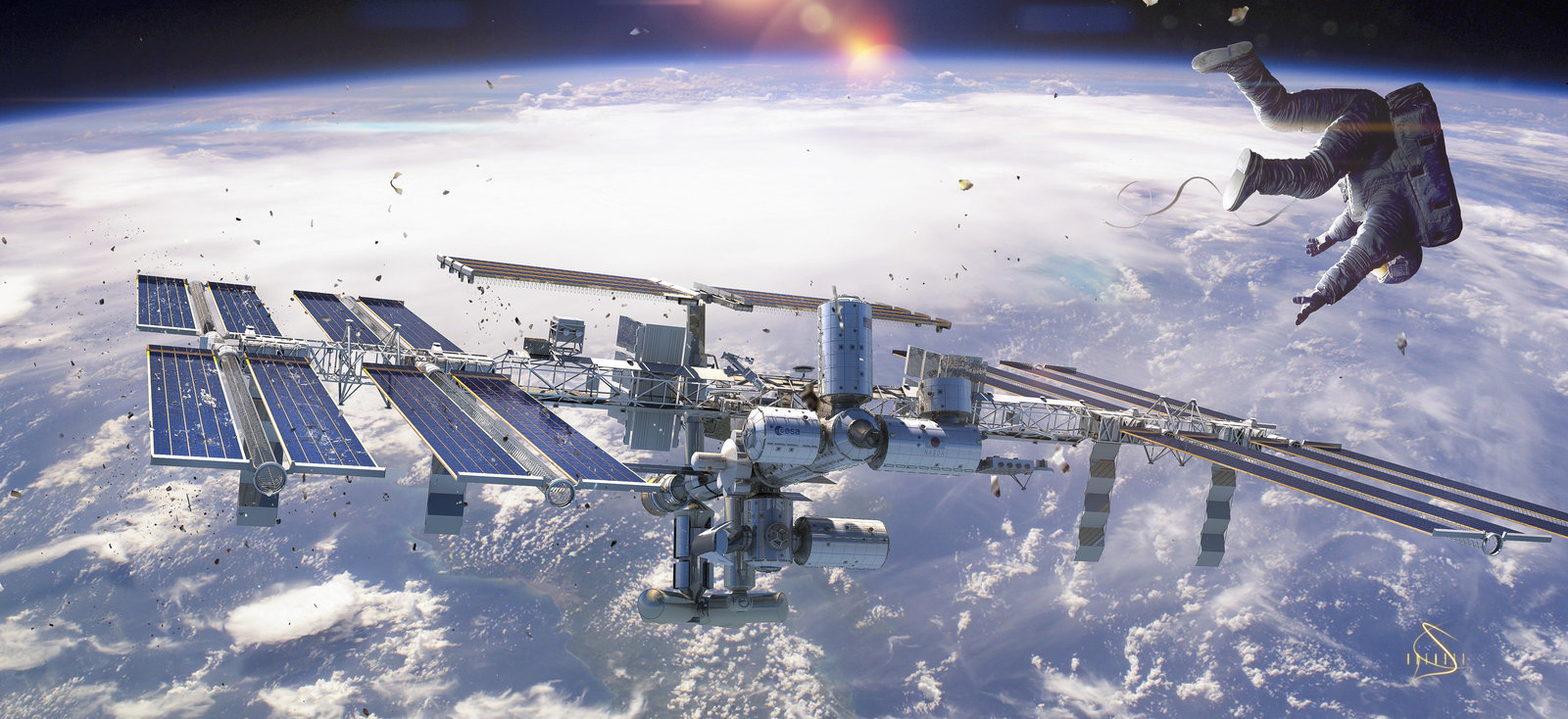
The two of these saw a number of other works in a similar vein such as the Found Footage film Europa Report (2103) about a mission to Jupiter’s moon; Approaching the Unknown (2016) with Mark Strong as an astronaut falling apart on a one-man mission to Mars; Life (2017) with an alien lifeform loose aboard the International Space Station; the Young Adult The Space Between Us (2017) with the first kid born on Mars coming to Earth; Ad Astra (2019), an Apocalypse Now (1979) in space with Brad Pitt on a mission to Neptune to terminate a rogue commander; The Midnight Sky (2020) with a returning Jupiter mission finding that Earth has suffered an extinction catastrophe; I.S.S. (2023) about the tension between US and Russian astronauts on the International Space Station when nuclear war breaks out between the two sides on Earth; and the South Korean The Moon (2023) about the efforts to rescue an astronaut stranded on The Moon.
Particularly bold was Christopher Nolan’s Interstellar (2014) concerning a mission through a wormhole orbiting Saturn in search of habitable worlds. The Beyond (2017) was a film about the attempts to explore a wormhole that appears in Earth orbit.
Other assorted dramas include One Under the Sun (2017) about a woman astronaut who returns from a Mars mission somehow changed; Incoming (2018) where the I.S.S. has been converted into a prison for terrorists who manage to escape and turn the station into a suicide missile aimed at Earth; Stowaway (2021) about a man accidentally caught on board during the launch of a Mars mission; Spaceman (2024) with Adam Sandler as a lone astronaut who befriends an alien; and Slingshot (2024) with Casey Affleck aboard a space mission experiencing possible paranoia and hallucinations as a result of hypersleep drugs.
In the comedic vein, Moonshot (2022) was a romantic comedy involving a stowaway on a flight to Mars. The Chinese-made Moon Man (2022) is essentially a comedic take on The Martian where Teng Shen is a lone astronaut abandoned on The Moon left believing he is the last person alive after an asteroid has destroyed the Earth. If You Were the Last (2023) is a romantic comedy featuring two astronauts stranded on a space shuttle mission who debate whether or not to take their relationship to the next level. The German film Wow! Message from Space (2023) features two kids who have communicated with aliens accidentally sneaking aboard a rocket that is launched into space. In Space Cadet (2024), Emma Roberts is an airheaded bartender who tricks her way into a NASA training program.
Television has taken up these real space missions with the National Geographic channel docudrama series Mars (2016-8) about the first colonists on Mars. There was also the fictional tv series’ The First (2018) about the preparations for a Mars launch and Away (2020) that takes place during the first mission to Mars, as well as the South Korean The Silent Sea (2021) about astronauts stranded on The Moon. Constellation (2024- ) was a series with Noomi Rapace caught in a disaster aboard the I.S.S. to discover that she has slipped into an alternate timeline. The most popular of these has been the tv series The Expanse (2015-22), which imagines a credibly lived-in solar system and the political tensions between various planetary bodies.
Alternate Takes
The era has also been several what can be called alternate takes on the Space Program. The Russian film First on the Moon (2005) was a mockumentary about the uncovery of a Soviet Moon landing made in 1938. Capsule (2016) takes place in an alternate history 1950s where Britain has launched its own space mission, only for the astronaut to become stranded in orbit and caught between US and Soviet sides.
The tv series For All Mankind (2019- ) takes place in an alternate history timeline where the Soviet Union ends up being the first to land on The Moon. Richard Linklater’s delightful animated Coming of Age story Apollo 10½: A Space Age Childhood (2022) was the story of a teenage boy who is recruited to fly a secret Moon mission.
Apollo 18 (2011) was a Found Footage work that depicts a fictional Moon landing mission that was covered up and the astronauts’ encounter with an alien lifeform. Sputnik (2020) was a Russian film about a 1980s cosmonaut mission that returns with one of the crew infected with a parasitic organism.
Also here you could include Operation Avalanche (2016), a Found Footage film that takes up the conspiracy theory belief that the entire Moon mission was faked in a tv studio, as well as Transformers: The Dark of the Moon (2011), which reveals that the Moon Landing was actually a front for a mission to explore a crashed Transformer ship. In the Doctor Who episode Day of the Moon (2011). we learn that aliens have hypnotically influenced humanity to land on The Moon in order to build a spacesuit.
Hergé had his famous comic-book characters of Tintin, Captain Haddock and Professor Calculus mount an expedition to The Moon in Destination Moon (1953) and Explorers on the Moon (1954), all conducted with a great degree of technical realism for the era. These were later filmed in two two-part episodes of the animated tv series The Adventures of Tintin (1991-2). Of course, in the time between the publication and the filmed episodes, the real Moon Landing had occurred, making the published story science-fiction and the filmed version an alternate take.
In no particular category is The Titan (2018) concerning the bio-engineering of humans to be able to live on Saturn’s moon. The Tank (2017) doesn’t actually go into space but depicts the psychological tensions between astronaut trainees locked inside an experimental NASA habitat. The Canadian-made Viking (2022) was an hilarious deadpan comedy about a group selected to roleplay astronauts on a Mars mission for problem-solving purposes only for the enactors to end up identifying too much with their counterparts.
Recommendations
- Woman in the Moon (1929)
- Cosmic Voyage/The Space Ship (1936)
- Destination Moon (1950)
- Man in Space (tv special 1955)
- 2001: A Space Odyssey (1968)
- Marooned (1969)
- Capricorn One (1978)
- The Right Stuff (1983)
- 2010 (1984)
- Star Cops (tv series, 1987)
- Contact (1997)
- Apollo 13 (1995)
- From the Earth to the Moon (tv series, 1998)
- Mission to Mars (2000)
- Red Planet (2000)
- Space Cowboys (2000)
- The Astronaut Farmer (2006)
- Gravity (2013)
- Interstellar (2014)
- The Martian (2015)
- The Expanse (tv series, 2015-22)
- Salyut 7 (2017)
- The First (tv series, 2018)
- First Man (2018)
- Ad Astra (2019)
- For All Mankind (tv series, 2019- )
- Away (tv series, 2020)
- Apollo 10½: A Space Age Childhood (2022)
- Viking (2022)
- I.S.S. (2023)
A full list of titles can be found here NASA and the Space Program

